The 15 Best LED Light Therapy Face Masks for At-Home Treatments, According to Beauty Editors and Experts
Tested and approved tools for treating fine lines, rosacea, hyperpigmentation, and acne.
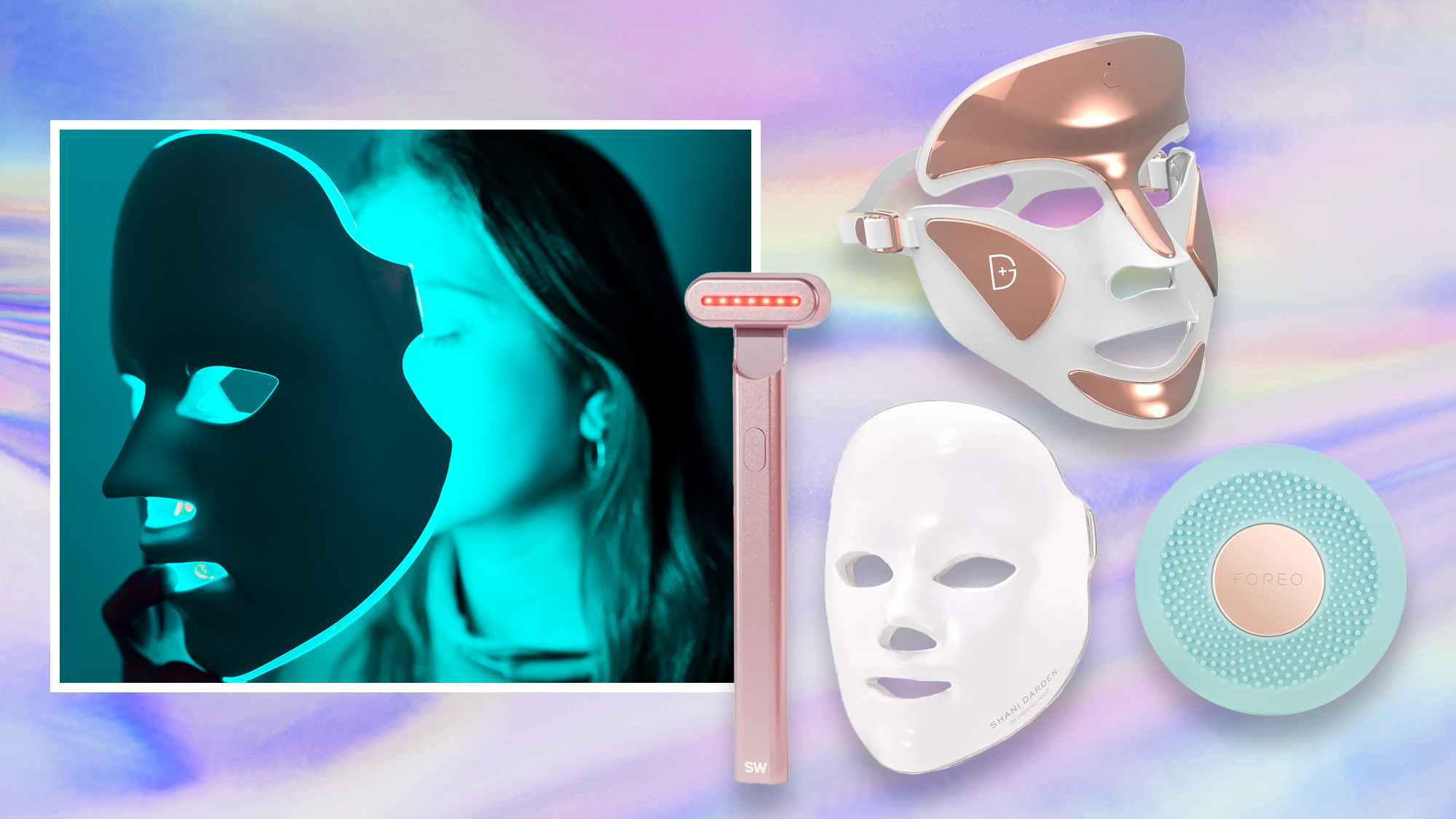

Julia Marzovilla
I try beauty products for a living—the good, the bad, the life-changing. The most transformative ones I've tested are the best at-home LED face masks, a.k.a light therapy masks. These anti-inflammatory, aging-reducing, acne-fighting light therapy treatments—which were once only available under the practiced hand of a dermatologist—leverage blue light, red light, yellow light, green light, and on occasion, white light to target skin concerns in the short-term (an at-home session takes about 10 minutes) and the long-term.
The masks are an investment, sure. But if you plan on using one regularly, it's well worth it. Marie Claire talked to dermatologists and tested the top-rated and top-recommended devices on the market to give you our expert-approved recommendations. Ahead, get insight from Dr. Tanuj Nakra, MD, FACS, a double board-certified facial & ophthalmic plastic surgeon, and Erica Marie Gatt, Esthetician and Founder of EM Skin Studio in Hermosa Beach, California.
The Best LED Light Therapy Face Masks at a Glance
- Shop The Best LED Light Therapy Masks
- How We Chose The Best LED Light Face Masks
- What to Look For in an LED Mask
- Is LED Light Therapy Safe?
- The Benefits of LED Light Therapy
- How to Use an LED Light Therapy Mask
- How Long Does it Take to See Results From LED Therapy?
- Meet The Experts
Marie Claire's Favorite LED Light Therapy Masks
- The Best Overall At-Home LED Mask: Dr. Dennis Gross Skincare DRx SpectraLite FaceWare Pro
- Best Comfortable At-Home LED Mask: Omnilux Contour Face
- The Best At-Home LED Mask for Redness: MZ Skin LightMAX Supercharged LED Mask 2.0
- The Best At-Home LED Mask for Acne: LightStim for Acne
- The Best At-Home LED Mask for Aging: Shani Darden by Déesse PRO LED Light Mask
Shop The Best At-Home LED Therapy Masks
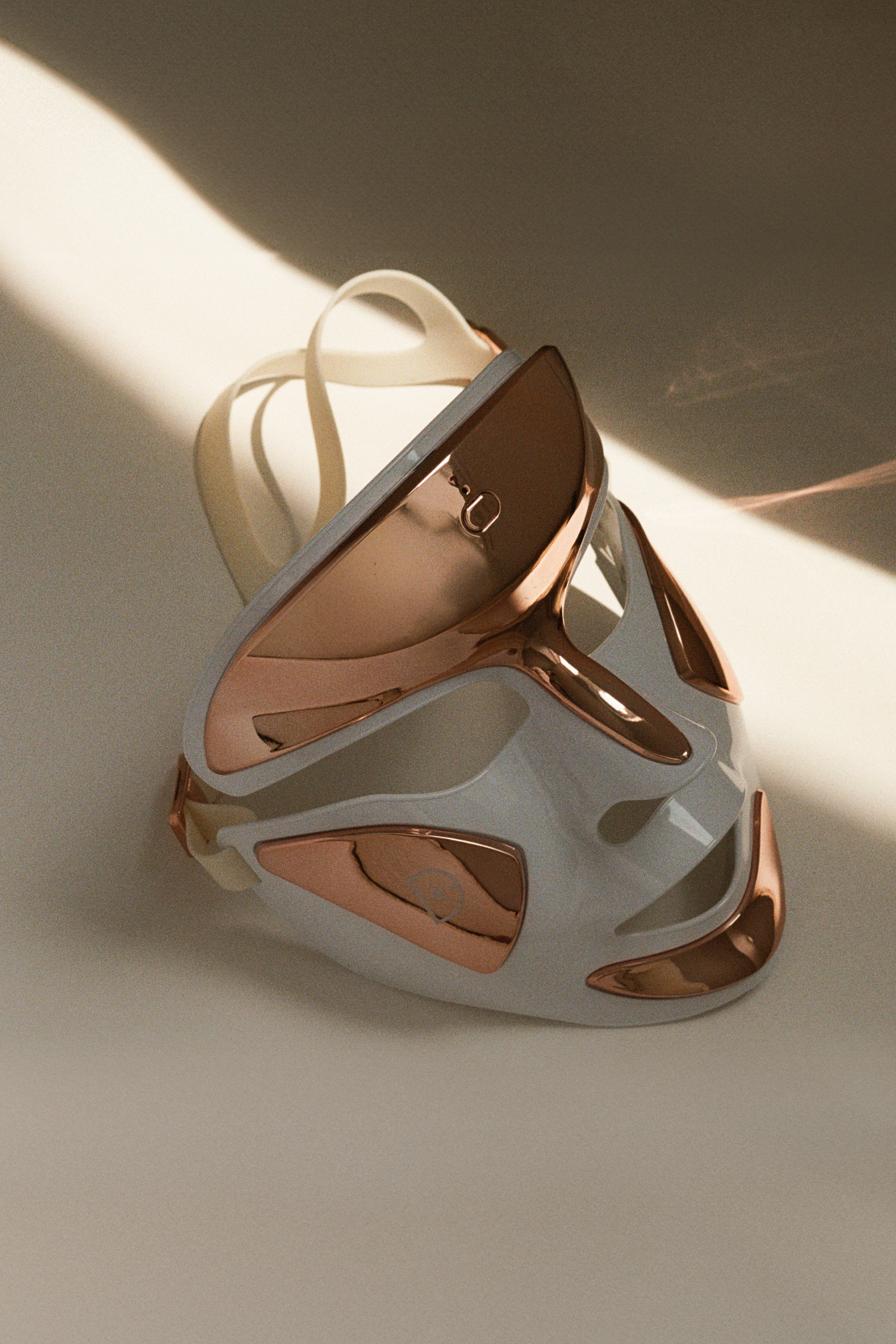
Deena Campbell, Beauty Director at Marie Claire, treats persistent hormonal breakouts with this device. "Every month I’m guaranteed to see one or two, but the blue light in Dr. Dennis Gross' LED mask is the truth," she says. it's also a favorite of Dr. Nakra because it "is well designed, has extensive LED arrays and covers the bases with the right frequencies," he says. It has a "medium" to "high" strength irradiance, which is ideal for those looking for real results."
FDA-Cleared: Yes
Light Modes: Red and blue
Usage: Three minutes per day
What We Love: Reviewers found it easy to use; has dual-action lights (red and blue); professional grade
What We Don't: Some reviewers found it bulky
Customer Review: "I've had this since December 2020 and absolutely love this product. I use as recommended every day for three minutes...it's on an automatic timer. I don't do botox anymore. I was definitely skeptical, but the proof is in my skin. It's also cleared up some acne that usually is a problem with my skin. Very well worth the price." — Sephora
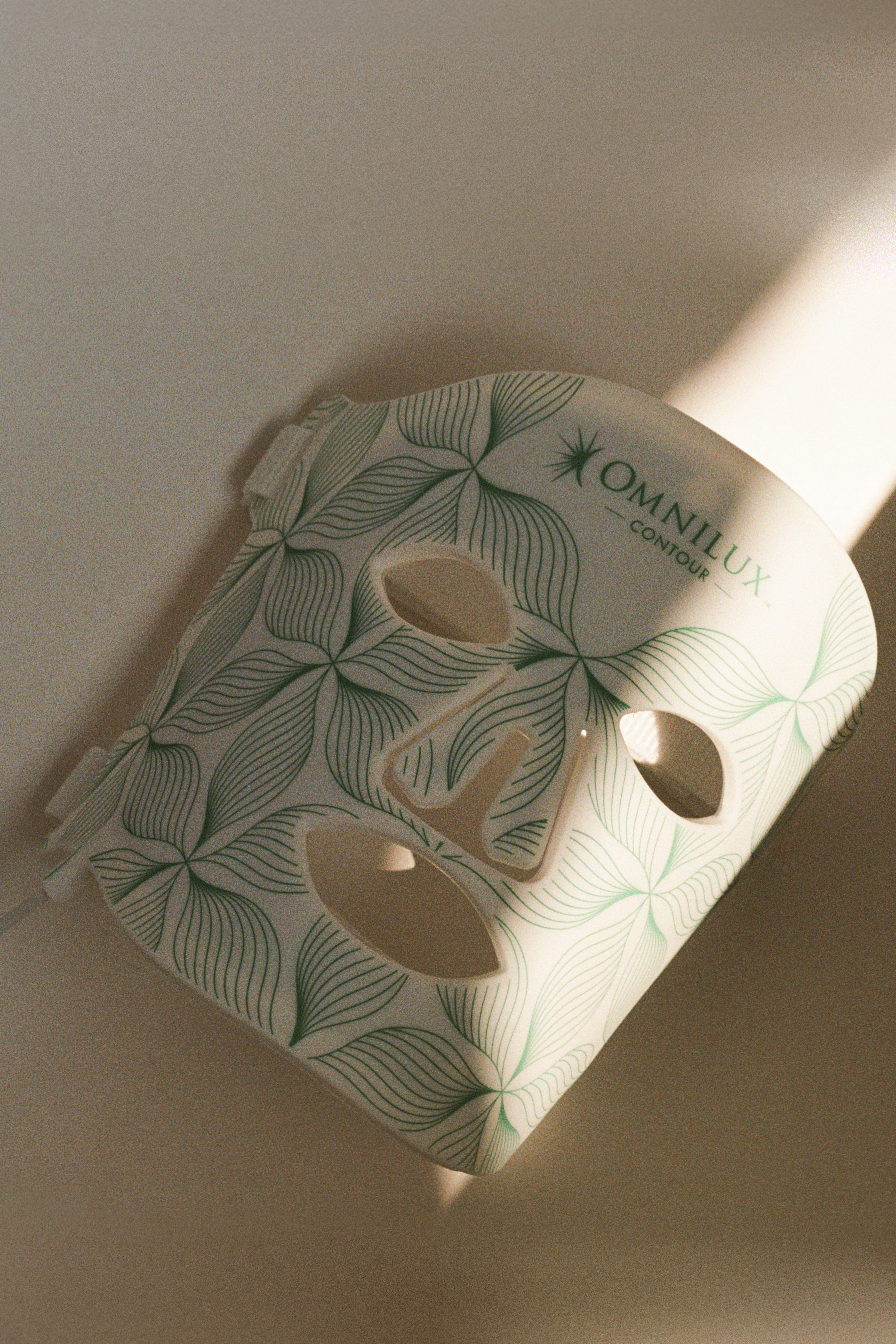
This mask from Omnilux is designed to fit the user's face better than most of the other options around. It straps on across the back of your head for a snug fit that will feel comfortable while you wear it for each of the weekly 10-minute treatments. It's made from flexible silicone, and it uses red and near-infrared light to target fine lines and wrinkles as well as calm redness.
FDA-Cleared: Yes
Light Modes: Red and near-infrared
Usage: 10 minutes, 3-5 uses per week
What We Love: Comes with a head strap for comfortable wear; professional grade
What We Don't: Needs to be plugged into the outlet during use; Some reviewers found it bulky.
Customer Review: "I will never be without this mask! I use it four to five days a week and whenever I have a headache. Not only did it get rid of my fine lines and wrinkles, but it definitely got rid of any crepiness and sagging I had. It also made my skin clearer and brighter." — Omnilux
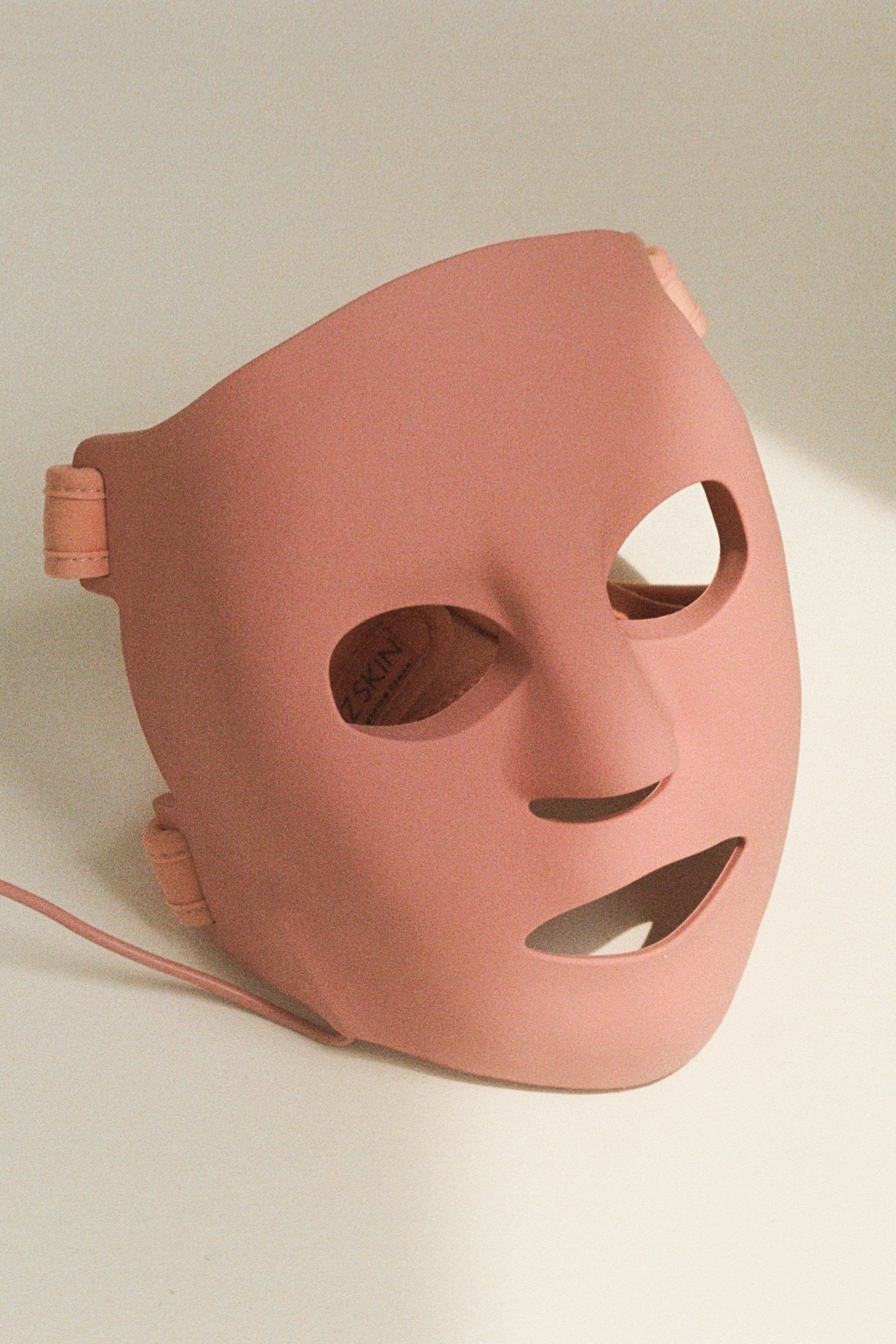
This pink face mask is a supercharged version of its gold predecessor. It’s made from a flexible material that fits your face, has a wireless design, and has two different light combinations for you to use. You can select from a combination of red and infrared light or one that emits red and blue LED light. The former stimulates collagen, calms inflammation, and improves circulation to boost the skin’s luminosity. However, using red and blue lights fights acne by decongesting and balancing the skin over time. The device is FDA-cleared for medical-grade use and comes with four international adaptors, making it perfect for travel.
FDA-Cleared: Yes
Light Modes: Red, blue, and infrared
Usage: 10 minutes, four times per week.
What We Love: Has a variety of lights; wireless; flexible design; comes with international adaptors; medical-grade; calms redness; fights acne
What We Don't: Some reviewers found it too small for their face
Customer Review: "I have been using the LED mask for about six months and I can really notice the difference. My redness has calmed down, and my overall skin looks brighter and healthier. I also love the fact that I can do household duties whilst wearing a mask and not confined to sitting in one spot. Will definitely be recommending this to my friends!" — MZ Skin
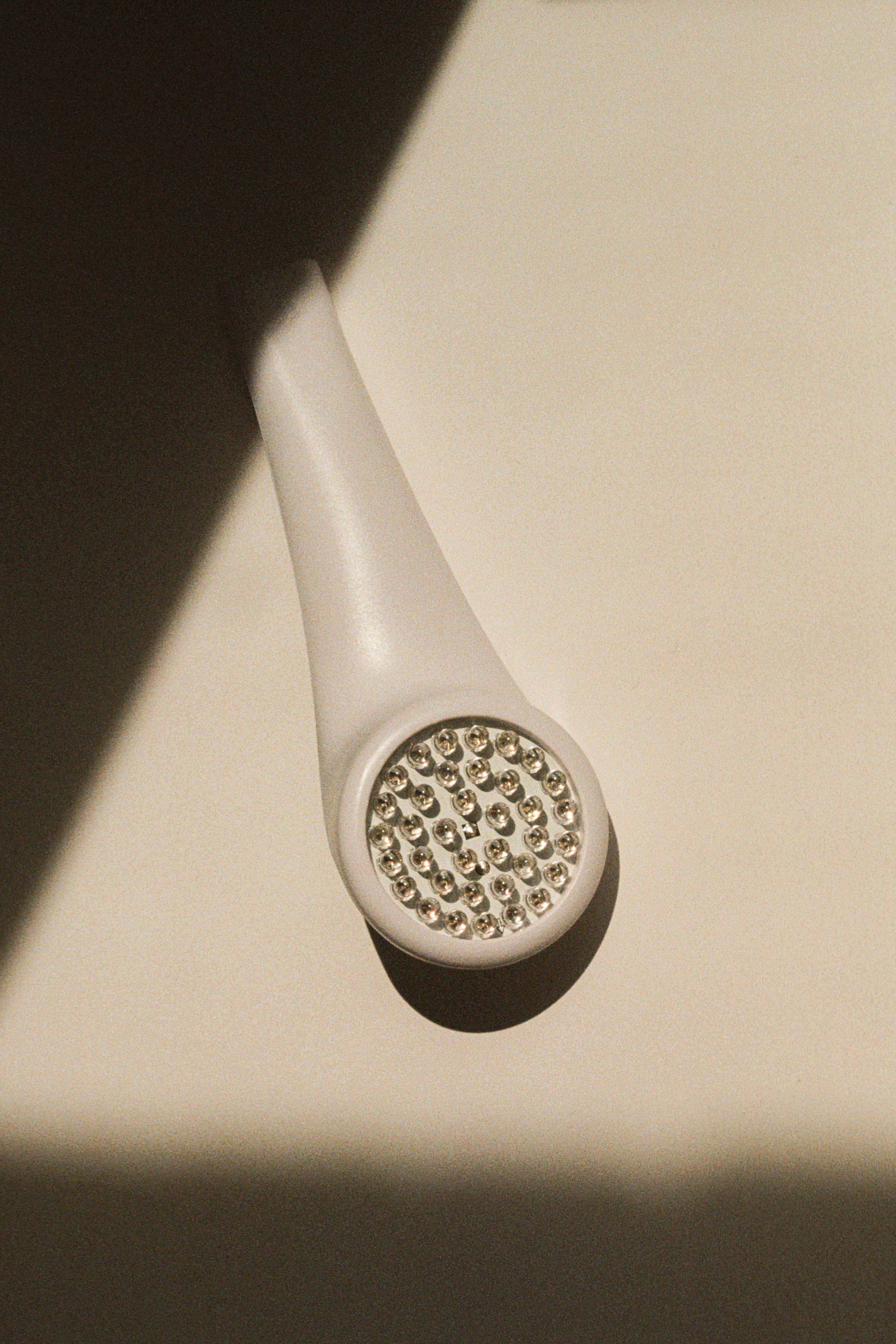
Whenever I sense that a juicy red pimple is going to take up residence on my face, I grab LightStim's handheld LED device. Its small and compact design makes it ideal for targeted treatment. Plus, it leverages blue light, which has been clinically proven to kill acne-causing bacteria, as well as red light, which can be beneficial for reducing inflammation. I promise that using this religiously will significantly reduce the lifespan of your pimple—and prevent new ones from popping up, too.
FDA-Cleared: Yes
Light Modes: Blue, red
Usage: No more than three minutes per area on the face daily
What We Love: Good for acne; targeted treatment; compact shape and size
What We Don't: You can't multi-task while using because the tool requires you to hold it in place.
Customer Review: "I purchased this a year ago and have been using it on and off and I can honestly say that this is a really good investment to make. I always reach for it when I get cystic or inflammatory acne and it really does help. It does help the acne go down and helps with the inflammation." — Revolve
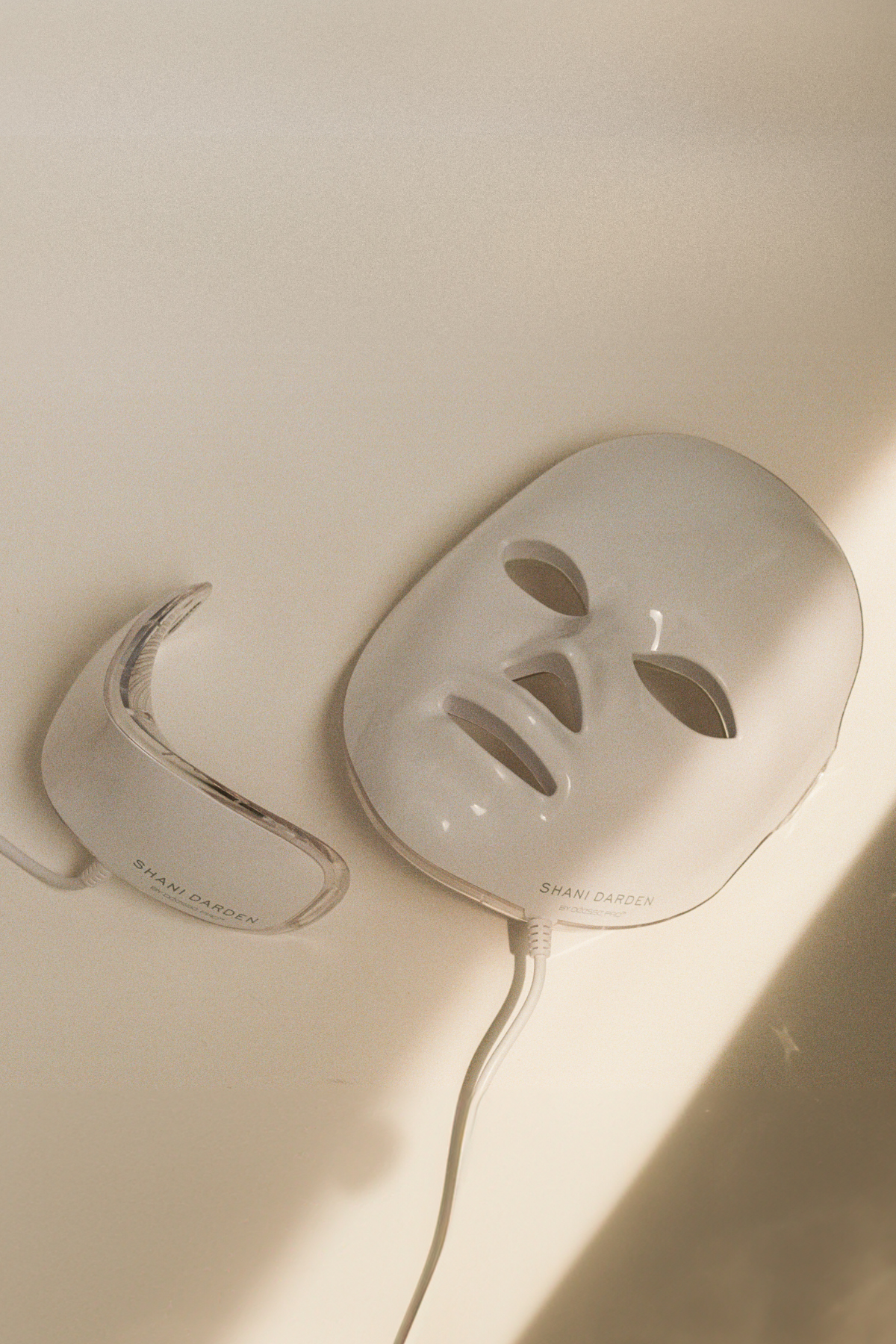
If you want to recreate in-office results at home, and on a regular basis, there’s no better option than this luxe mask by Shani Darden. The blue and red lights target three concerns: aging, pigmentation, and acne. To see the best results, you’re going to want to sit with this mask four to five times per week. Editors' favorite part about this product, though, is that it doesn’t just target the face—it has a separate attachment to address your neck.
FDA-Cleared: Yes
Light Modes: Red, near-infrared, blue
Usage: 10 minutes, 4-5 times a week
What We Love: Professional-grade; Customizable; Targets neck
What We Don't: Some reviewers found it bulky.
Customer Review: "The mask is very comfortable and I immediately felt tighter and smoother skin after a few treatments. My favorite new thing at the end of my workday from home is to plop on my comfy chair and run the quick 10-minute light session. It's like a meditation and face rejuvenator all at once! I love the sense of a healthy glow to start my evening." — Shani Darden
Other LED Light Therapy Masks We Love
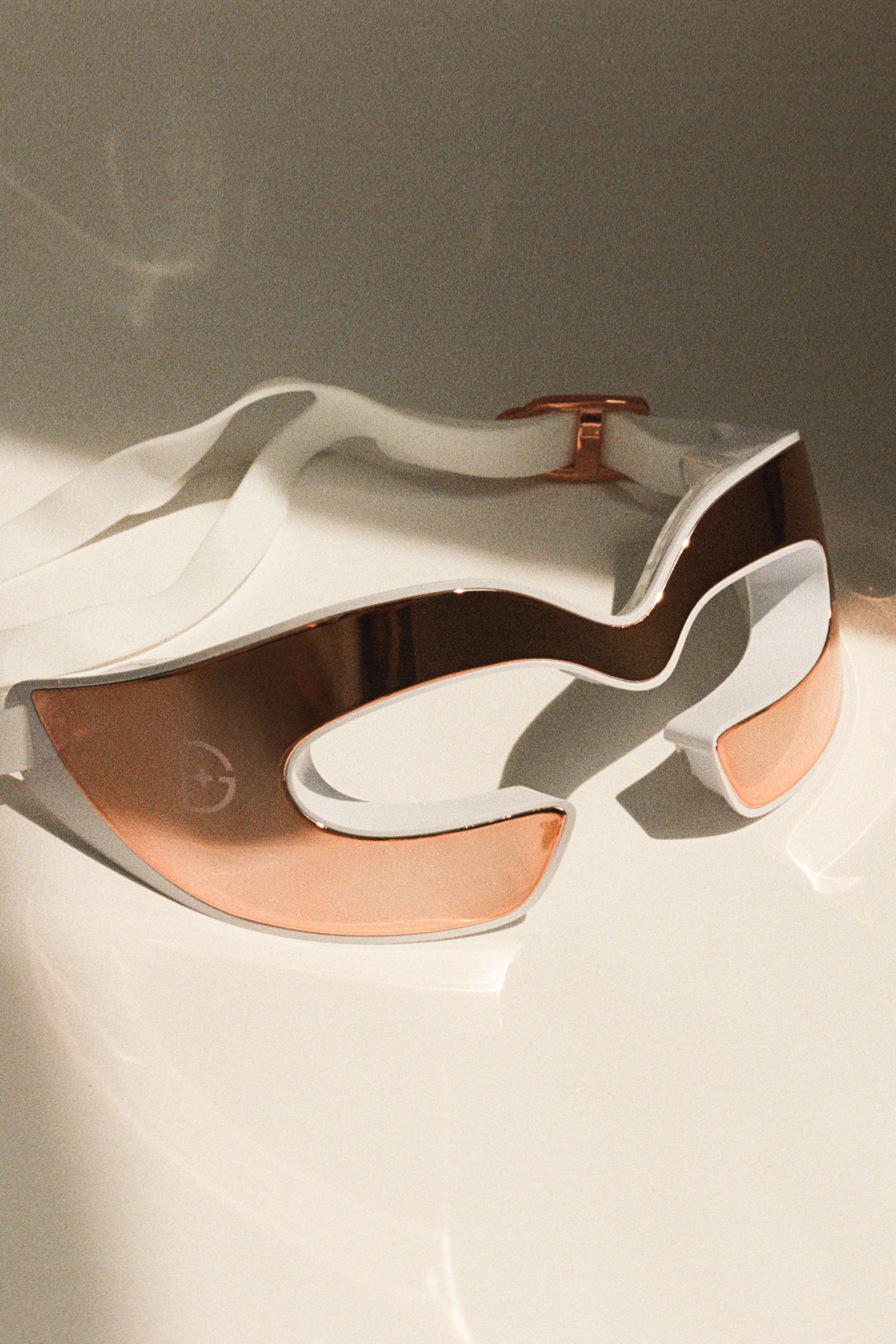
I'm a longtime fan of the Dr. Dennis Gross Skincare DRx SpectraLite FaceWare Pro (peep above), so I was thrilled when the brand launched a device targeted specifically to the eye area. The contraption packs in 96 red LED lights, which means it's able to target the undereye, brow bone, crow's feet, and 11 lines. Like other devices, it's going to firm skin and reduce wrinkles. It's unique in that it has the ability to reduce the appearance of dark circles.
FDA-Cleared: Yes
Light Modes: Red
Usage: Three minutes, daily
What We Love: Concentrated treatment; High concentration of lights
What We Don't: Some reviewers said it feels heavy
Customer Review: "I am absolutely obsessed over this new LED eyecare max pro! I have a huge improvement in fine lines and wrinkles. My crows feet are fading away, it’s unbelievable how amazing this works after years of searching for a device that actually works I’m so impressed!!" — Sephora
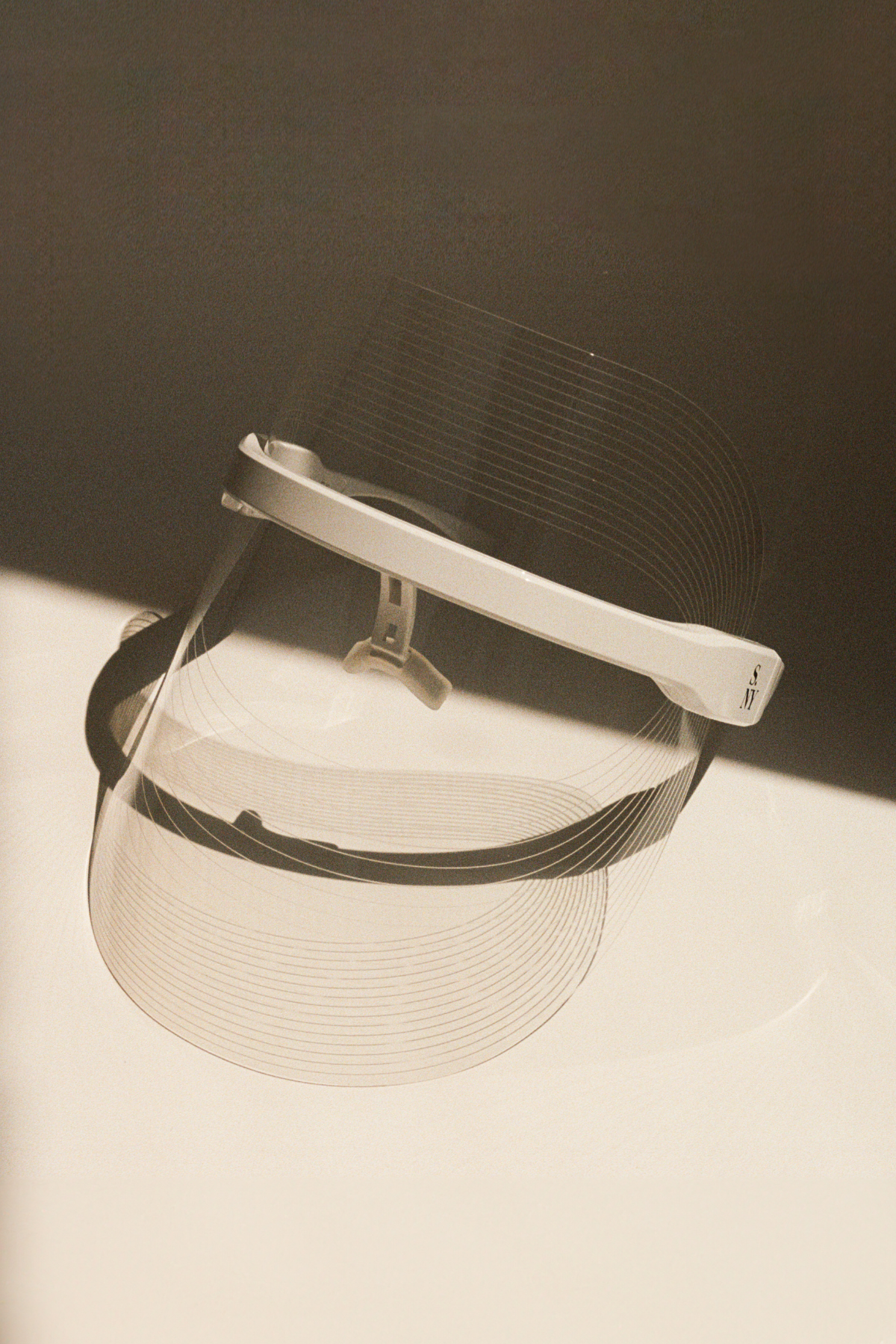
With blue, amber, green, and red lights within its design, this affordable face mask from Solaris Laboratories NY is multi-purpose at its core. With the flip of a switch, users have the ability to improve their circulation, treat acne, boost collagen, and bring a healthy glow back to anyone with a dull, tired appearance. Use this wireless LED mask three to five times a week for 15 minutes, and you're bound to notice results. Plus, since it’s so lightweight, you’ll find it easier than ever to indulge in self-care.
FDA-Cleared: No
Light Modes: Amber, red, blue, green,
Usage: 15 minutes, 3-5 times per week
What We Love: Multi-beneficial; wireless
What We Don't: Not as powerful as others on this list.
Customer Review: "Highly effective! I notice a difference in my skin every time I use this product. I used it this morning and my skin was noticeably less red and appeared brighter and tighter. Compared to other similar products in the market, this is great value. Easy to use and good battery life." — Revolve
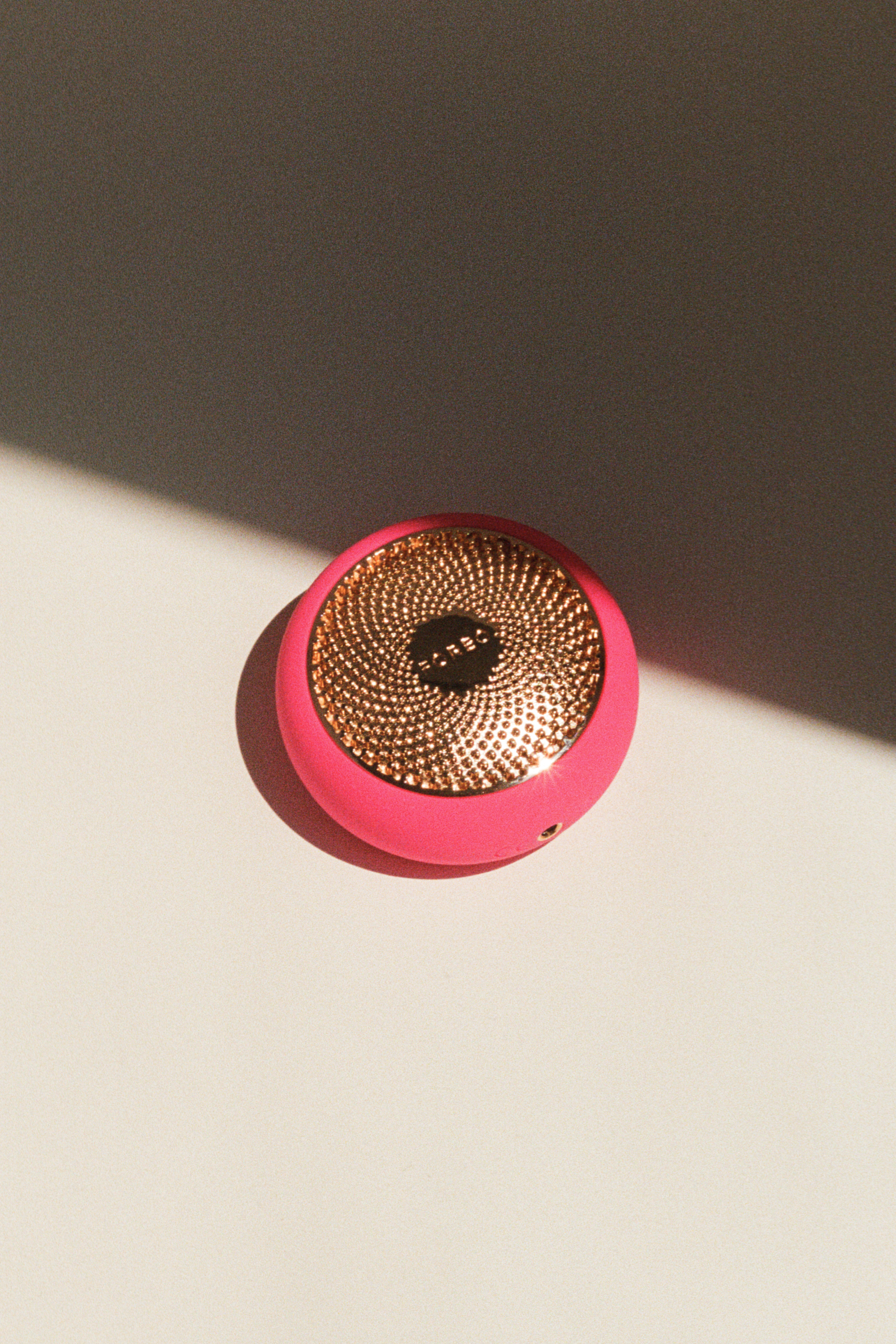
This tiny device is clinically proven to reduce the look of wrinkles in one week. It gently warms and softens the skin to help your skincare reach the deepest layers of your skin, making them more effective than when used alone. It uses full-spectrum LED light to do this. The accompanying app comes pre-loaded with eight treatments to combat dull, tired-looking skin in just a few minutes. It’s also made from a lightweight, waterproof silicone material and is wireless to use—each charge gives you one hour of use. Each use clocks in at just two minutes.
FDA-Cleared: No
Light Modes: Full-spectrum lights
Usage: The pre-programed treatments last for two minutes, all of which can be found in the complimentary phone app, daily
What We Love: Fast-acting; multiple light options; cordless design; waterproof
What We Don't: Can't multi-task while using because the device requires you to hold it in place.
Customer Review: "I've been using the ufo 3 led for a few weeks now, and it's become an essential part of my skincare routine. Just a few minutes each day, and my skin feels hydrated and looks radiant. It's incredibly easy to use and gives immediate results, making it perfect for my busy schedule. I love that I can get spa-like treatments at home!" — FOREO
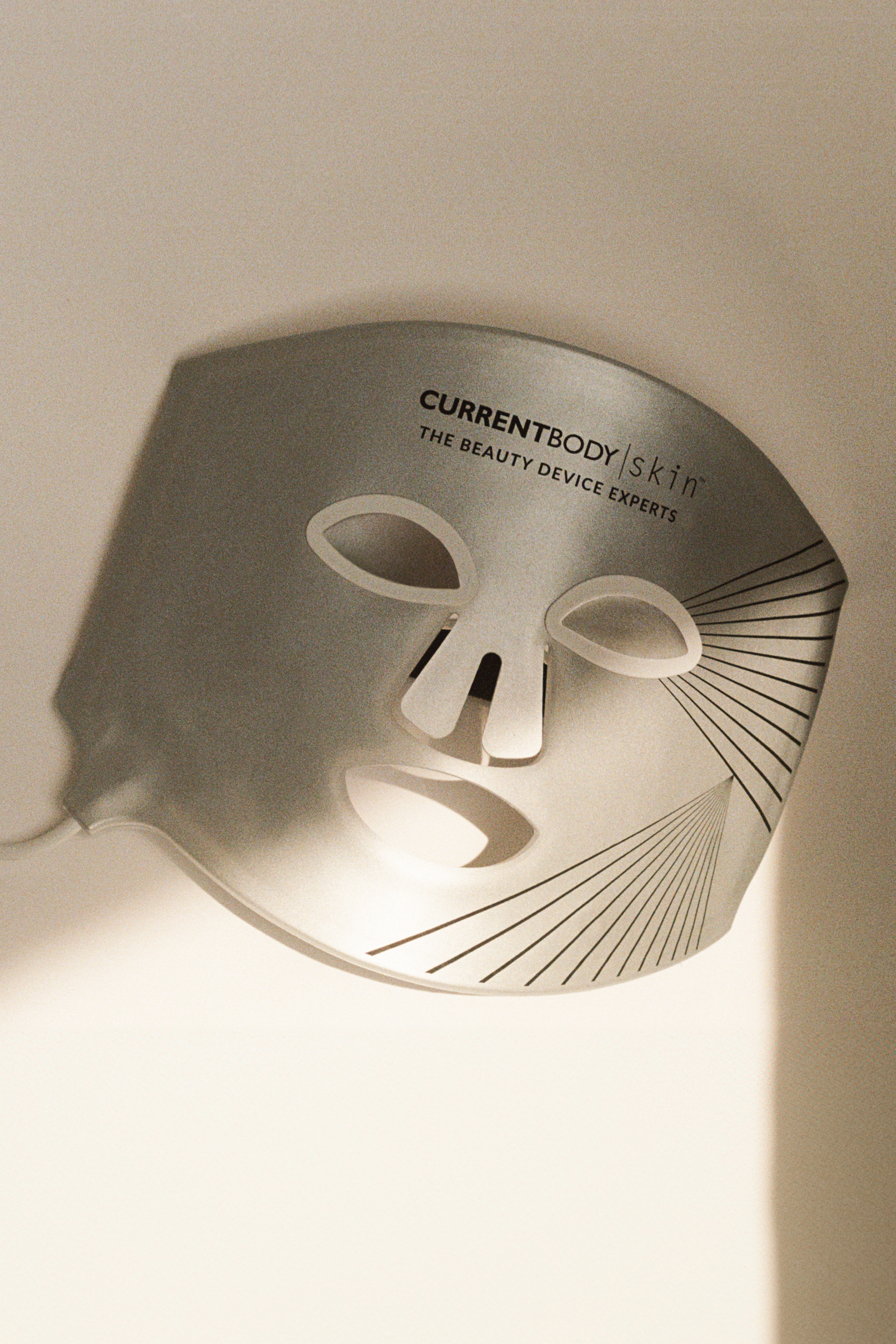
With Carey Mulligan, Kayley Cuoco, and Kristin Davis among this mask's fans, it shouldn't be a shocker that this product delivers big time results. Part of the efficacy is rooted in its flexible material, which ensures that the red and infrared lights hit and treat every contour of the face. As a result, it's more effective for improving skin tone, texture, and the appearance of fine lines. And because it features 132 powerful LED bulbs, it’s able to treat skin in only 10 minutes. This also has the approval of Dr. Nakra because "it has some of the highest emission (irradiance) in both red and blue wavelengths for a home-based device," he says.
FDA-Cleared: Yes
Light Modes: Red and near-infrared
Usage: 10 minutes, 3-5 times per week
What We Love: Form-fitting; easy to store; powerful; dermatologist-recommended.
What We Don't: Doesn't have lights placed by upper lip or upper forehead
Customer Review: "I’ve been using light therapy for quite some time and this is the best mask I’ve come across. The bulbs are super bright, the mask is flexible and adjustable. Bonus is that once charged you can wear it anywhere without being tethered to a wall plug. I only wish it had blue light with it!!" — CurrentBody
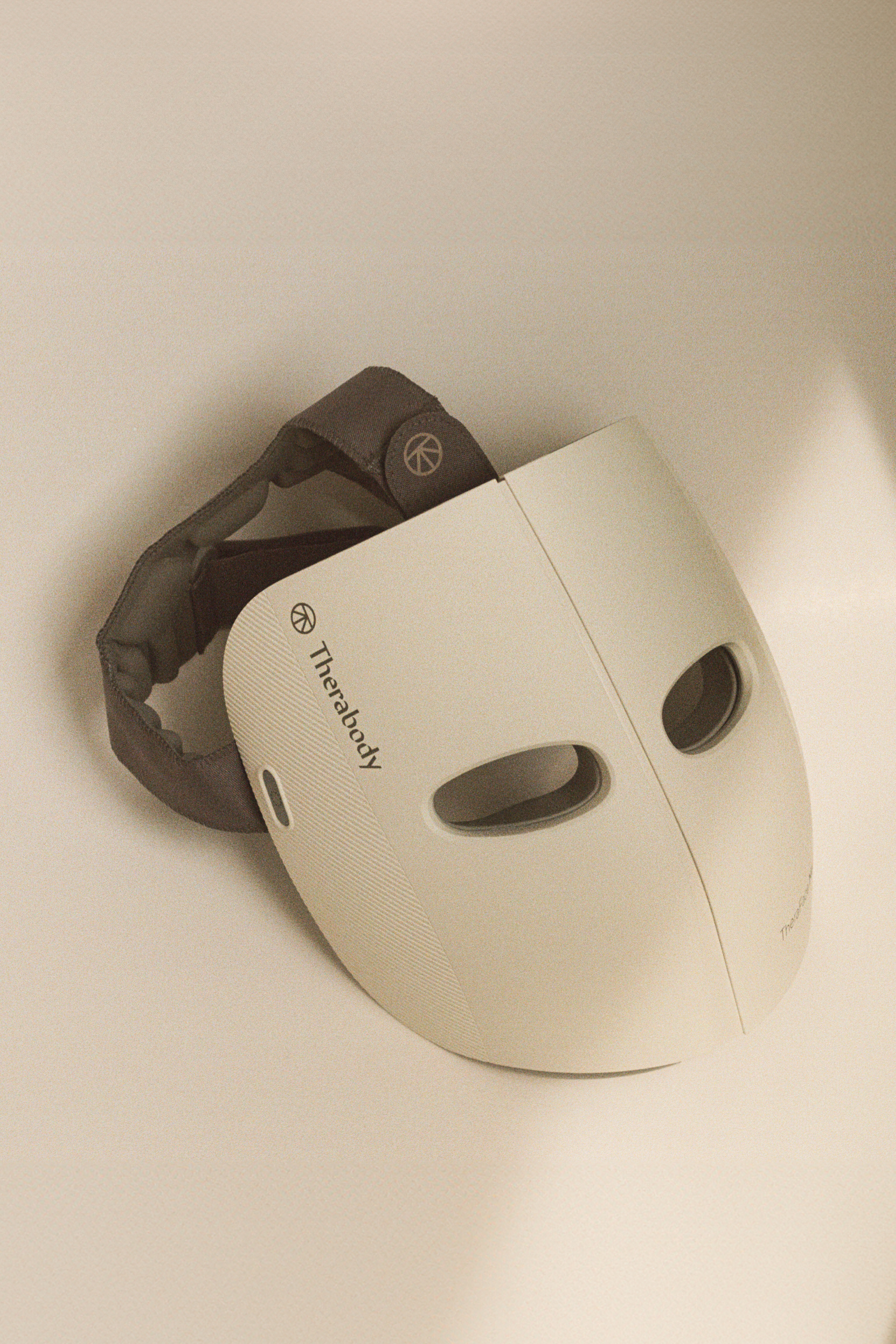
When TheraFace entered the LED face mask category, they did so with their own twist. Taking a cue from the percussive therapy attachment on their famed TheraFace, they made a point to incorporate the same vibrational therapy in their 648-light LED mask. Cleared by the FDA, it features red light, infrared light, and blue light to help with hyperpigmentation, acne, and reducing visible signs of premature aging. The brand promises results in just eight weeks, and it makes skincare easier than ever by including removable protective eye shields in its design.
FDA-Cleared: Yes
Light Modes: Red and blue
Usage: Nine minutes, daily
What We Love: Effective
What We Don't: Some reviewers found it to be heavy
Customer Review: "The documentation claims you will see visible results in as little as 8 weeks for fine lines and wrinkles, but I can actually tell a slight difference in my 'crow’s feet' already. I never knew light and vibration could have such an impact. The mask is comfortable while wearing it and the included eye shield means you can still see and go about your business while wearing it if you so desire. For me, the vibrating massage is the absolute best part as it eases tension and even has helped with my headaches." — Neiman Marcus

Some days, you might notice your skin looks duller than usual. On those days, you wake up with a smattering of zits that have you running for acne spot treatments. Skin changes, but this mask will adapt to it. Its blue, red, and orange lights work to treat different conditions, and you can switch them depending on the state of your skin that day. Its blue, red, and orange lights all work to treat different conditions, and you can switch them depending on your complexion's status. It's also more affordable than many of the options on this list.
FDA-Cleared: No
Light Modes: Blue, red, and orange
Usage: 15-30 minutes, daily
What We Love: Dual-action lights; wireless;
What We Don't: Lights sit farther from the skin
Customer Review: "I absolutely love this mask and that it comes with three different light options. I mainly use the blue and red lights. My breakouts, even hormonal ones, are much less frequent and heal so much faster without leaving discoloration. Areas that were previously discolored now look so much more even...The only downside is that the battery doesn't last long, so if my session gets interrupted I use a portable phone charger and plug the cord into that, then into my mask to charge while I use it." — Ulta
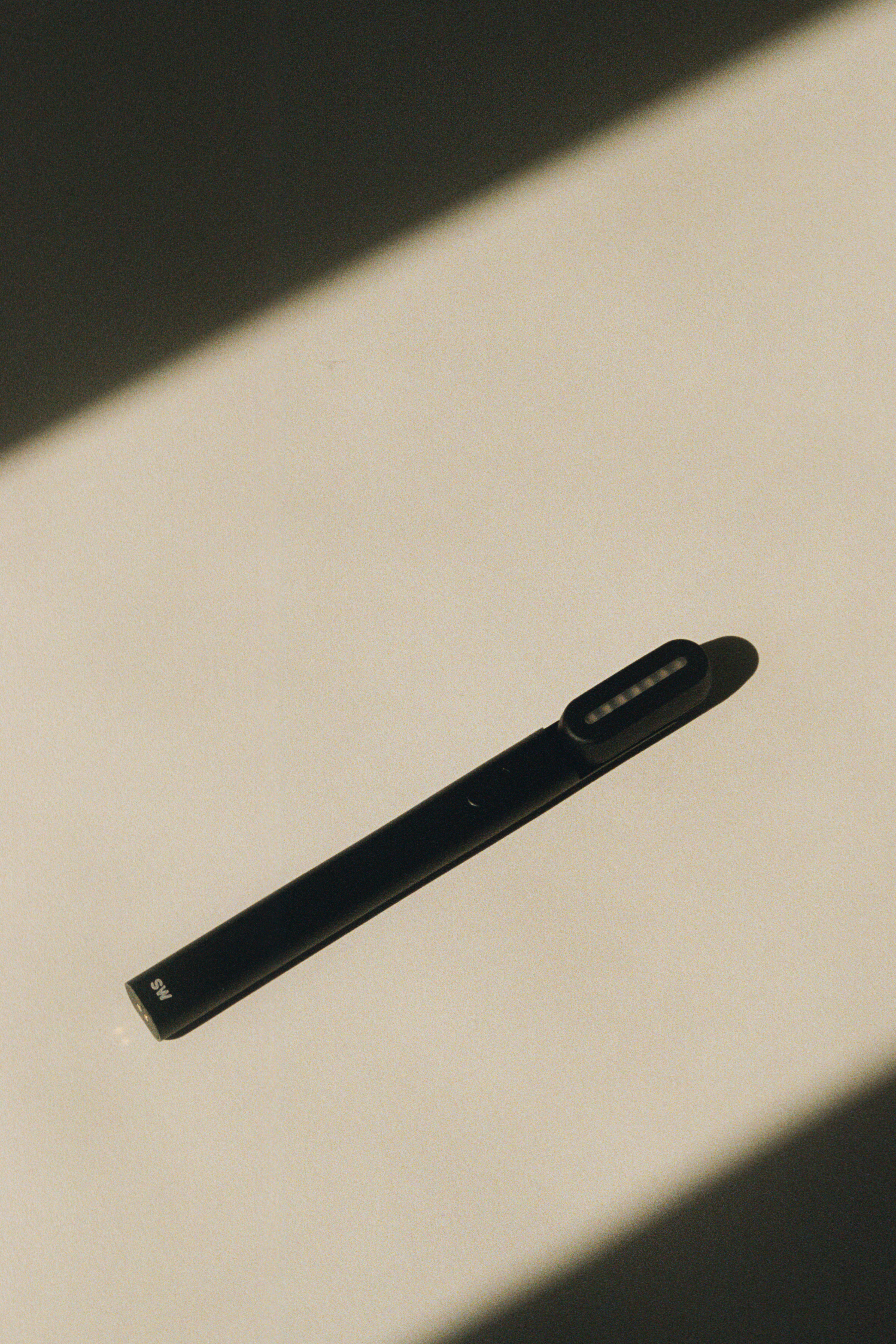
If you’re new to LED therapy, ease into the practice with a handheld device like this multifunctional facial tool from SolaWave. With microcurrent, facial massage, and therapeutic warming functions, this easy-to-use design helps smooth the appearance of blemishes and fine lines with every session. It also minimizes breakouts, decreases puffiness and the appearance of dark circles, and stimulates facial muscles for tighter-looking skin. Bonus: It's portable and super easy to use around the house, on the go, or during travel.
FDA-Cleared: Yes
Light Modes: Red
Usage: No more than three minutes per area of the face, daily
What We Love: Compact; easy to travel with.
What We Don't: Not as powerful; can't multi-task while using because the device requires you to hold it in space
Customer Review: "I am so thrilled that my esthetician told me about this...My skin looks healthier, my 11s are visibly reduced, and it's helped with my acne scarring too. I'm excited to see how the results continue to develop!" — Bluemercury
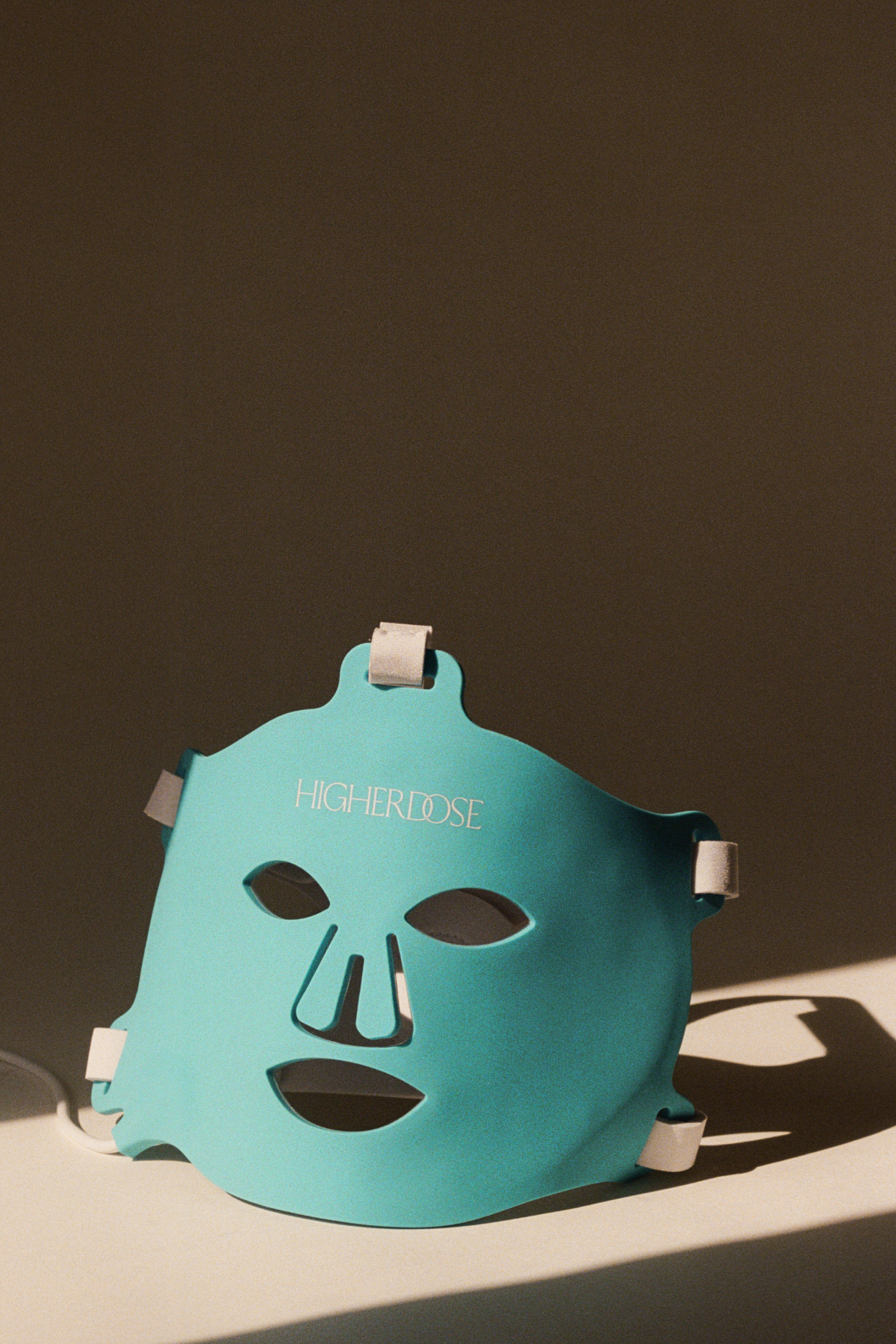
In addition to its popular infrared sauna blanket, HigherDose has a LED face mask in its buzzy lineup. It's crafted from medical-grade silicone with red and near-infrared light-emitting diodes on the interior to mimic low-level rejuvenating wavelengths found in natural sunlight. The result? A relaxing and warming boost to your skin (and mood), that enhances your natural glow. Perhaps the most enticing part here is that the mask, powerful as it may be, doesn't need to be plugged into a wall during use. "We often focus on the face and forget about the neck and decollete," says Gatt of this mask. "This LED Mask takes the hard work on so you don't have to by boosting collagen. elastin and reducing fine lines and wrinkles."
FDA-Cleared: No
Light Modes: Red and near-infrared
Usage: 10 or 20 minutes, 3-5 times a week
What We Love: Comfortable to wear; cordless design; Dermatologist-approved.
What We Don't: Not as powerful as other options on this list; Has only one type of light
Customer Review: "I have been using the HigherDose red light face mask for a couple of weeks and I absolutely love it. Using it doesn't take long and I can already see the fine lines and laugh lines fading." — HigherDose
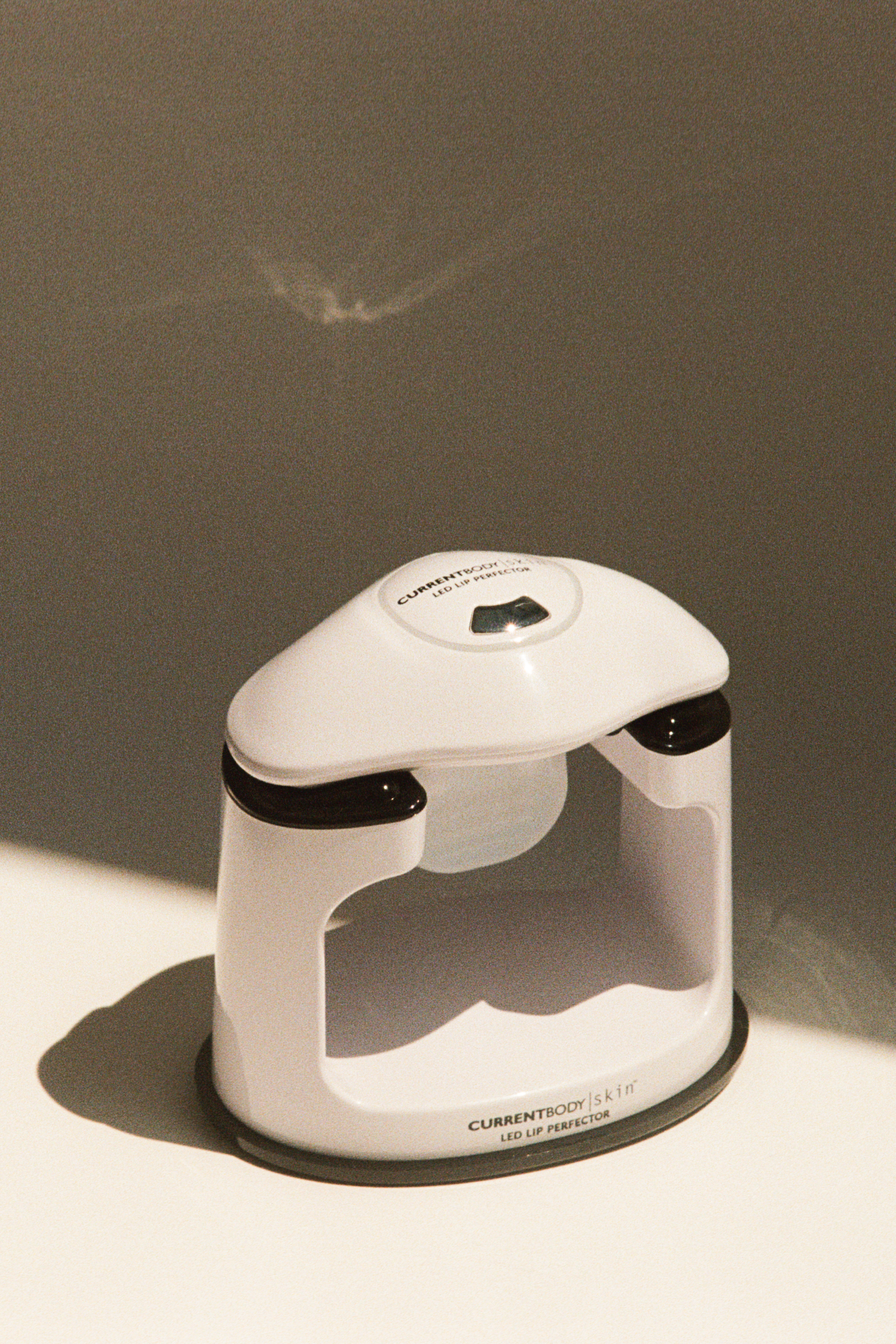
I’ve professed my love for this device in a dedicated review of CurrentBody's LED lip mask, so it’s only natural to include it on Marie Claire's best at-home LED masks list. The small but mighty tool is infused with both red and infrared light therapy to target signs of aging (read: fine lines), plump the lip area, and even tone. While it does take a minimum of four weeks to notice any results, and the full effect doesn’t kick in until eight weeks in, this treatment does work. You just need to make sure to treat the area for three minutes, day in and day out.
FDA-Cleared: Yes
Light Modes: Amber, red, near-infrared
Usage: Three minutes, daily
What We Love: Targeted treatment; easy to store
What We Don't: Some reviewers found it slightly uncomfortable to wear
Customer Review: "I have several other LED units, but jumped on this particular one due to its targeted zone. I have particular issues around my mouth. I have already noticed a plumping and firmness in my lips ,as well as improved skin around my mouth. I had a few breakouts (in spite of being over 60) and they healed overnight. I have not seen this happen in several decades. I have only been using this for a few weeks, and can't wait to see the continued effects." — CurrentBody

While a big and sturdy LED mask has its benefits, you may not want to deal with such a bulky tool if you're pressed for space. That's where this flexible one comes into play. Not only does it lay nice and flat for storage purposes, but it also has the added benefit of adhering snugly to the skin. It features red and infrared light, which work together to powerfully improve blood circulation, treat damaged skin, and combat signs of aging.
FDA-Cleared: Yes
Light Modes: Red and near-infrared
Usage: 10 minutes, 3-5 times per week
What We Love: Compact; reviewers found it comfortable to wear
What We Don't: Needs to be plugged into the wall
Customer Review: "I was very skeptical seeing as its definitely on the more expensive side of skincare. This is has completely changed my skin. It leaves your skin feeling soft as soon as you take off the mask. This has helped with my acne in a way I didn’t imagine. Definitely worth the splurge. I can’t imagine not having this step in my daily routine." — Bluemercury
How We Chose The Best LED Light Face Masks
Every at-home LED mask on this list has been specifically chosen by Marie Claire's Beauty Editor, Samantha Holender (yes, it’s me), and Marie Claire's Beauty Director, Deena Campbell. Every expert leverages LED technology that is clinically proven to deliver results, feels comfortable when being worn, and is highly rated by reviewers. While the *best* at-home LED light therapy mask for you will depend on your specific skin concerns, personal preference, budget, and skin goals, you’ll be able to find an option that delivers, ahead. For a more personalized recommendation or if you have any concerns, check with your board-certified dermatologist.
What to Look For in an LED Mask
- Efficacy: Big LED machines in spas and dermatologists' offices are obviously a lot more powerful than little at-home masks. You're going to need a certain level of LED light exposure to see results with your personal tools; the standard minimum emission for red light exposure is 30 milliwatts/cm; blue light will be a bit lower. "For an LED mask to be effective, it must be at a clinically relevant wavelength, and have a reasonable amount of irradiance or power," explains Dr. Nakra. These numbers should be available through the manufacturer or on the product page—below, we dive into what to look for for each color.
- Types of LED Colors Offered: Every color of light corresponds with a specific wavelength that directly correlates with specific results. Red and blue lights typically treat hyperpigmentation, visible signs of aging, and acne. Yellow lights can address redness and rosacea while increasing circulation. For repairing slight skin abrasions, white wavelengths are the best option. Make sure you reference these ranges before you commit to a mask, Gatt advises. "If the device you’re looking at lists a different nanometer that’s not in range, or mentions a different color, it’s not going to help you achieve your skin goals." She explains that blue light should fall within 445 to 490 nm, green light should fall within 490 to 570 nm, yellow light should fall within 570 to 590 nm, red light should fall within 620 to 780 nm, and white light should fall within 700 to 1000 nm.
- FDA Approval: While there are dozens and dozens of LED light therapy face masks to choose from, only a handful have FDA approval. "The search for a safe and effective device begins with making sure the device is FDA approved," says Dr. Nakra. You can check this for yourself on the FDA's database.
- Design: While you might prefer an LED mask that goes on like a pair of sunglasses, others might want a design that straps them in—it's really personal preference. That said, some features are non-negotiable, like the number of LED lights and their distribution. The more LED lights, Gatt says, the better. "In order for the lights to penetrate directly into the cells, they need to be close together and there needs to be a lot of lights, at least 100 or more," she continues. "You also want the lights as close together as possible to get the best results."
- Comfort: The most comfortable at-home LED for you largely comes down to personal preference. Because they are heavier devices, chances are they are going to feel a little weighted—it just depends where that weight is distributed. A rubber or silicone option will rub the skin less, a sunglass-inspired mask will likely cause a little ear irritation, and a behind-the-head strap will require you to sit still.
Is LED Light Therapy Safe?
After years of avoiding the sun's UV rays in service of healthy skin, treating your face with light can feel counter-intuitive. But facialists, dermatologists, beauty editors, and the American Academy of Dermatology all agree: Generally speaking, LED light therapy treatments are safe and effective, since they don't use UV rays.
A couple of caveats, however: You should be careful about using LED face masks alongside skincare that makes your face sensitive to light, like retinol or Accutane. "Prescription drugs, including antibiotics, diuretics, and even some over-the-counter medications such as St. John’s Wort can cause sensitivity to LED light therapy," explains Dr. Nakra. "Rare eye conditions including certain retinal diseases can be exacerbated by LEDs as well. If you are unsure, check with your doctor or dermatologist about whether your medication can cause light sensitivity (photosensitivity)."
You'll also want to exercise extra caution when it comes to blue light. "Using it longer than 20 minutes can cause pigmentation to worsen or appear," says Gatt.
The Benefits of LED Light Therapy
At-home LED therapy devices are less powerful than the treatments you'd get at a dermatologist's office, which means you can use them safely, but it'll take longer to see visible results. The result you'll see, however, depends largely on the type of light therapy you're using. Most of the LED face masks on our list use either red (anti aging) or blue light therapy (anti-bacterial) to treat several skin woes. Still, there are also different wavelengths—including white, yellow, amber, and green—that might be featured in your product. "Combining more than one wavelength helps you get the best results," says Gatt. "Your skin is always changing, so it’s nice to have options."
Ahead, find detailed breakdowns of the benefits of the most LED light therapy colors with insight from Dr. Nakra.
- Benefits of Red LED Light Therapy: Red light is going to be the most popular color you'll find in LED masks, in part because its benefits are so wide-ranging. "Red LED lights emit energy that travels deep into the skin, and stimulates the molecular pathways inside the cells and mitochondria to produce more collagen, reduce inflammation, and reduce redness," explains Dr. Nakra. Red light has also been shown to increase collagen production in the skin, which helps reduce the appearance of fine lines and wrinkles.
- Benefits of Blue LED Light Therapy: Unlike red light therapy, blue light therapy works better for acne-prone skin. It reduces the frequency of new breakouts and treats existing ones, courtesy of a two-step process within the layers of your skin. First, blue light can make your skin produce less oil, which equals less clogged pores. Then comes step two: The destruction of bacteria. "Blue light has a shorter wavelength, and thus reaches only the superficial layers of the skin," explains Dr. Nakra. "The benefits include treatment for acute inflammatory conditions like acne and hyperpigmentation."
- Benefits of Green LED Light Therapy: The opposite of red on the color wheel? Green, which is why green light therapy is a saving grace for anyone with unwanted redness or rosacea. "Green LED light penetrates into the intermediate layers of the skin and is absorbed preferentially by minute blood vessels that can cause facial redness and rosacea," says Dr. Nakra. The result? A more even skin tone. Gatt adds that green light "targets dark circles and pigmentation" by preventing excess melanin from being produced.
- Benefits of Yellow LED Light Therapy: The benefits of yellow light are somewhat similar to those of green light. While you typically won't find a device with exclusively yellow light therapy, it may be one of your options. "Yellow LED light penetrates into the superficial layers of the skin," explains Dr. Nakra. Gatt adds that by doing this, it's able to stimulate blood flow and reduce redness, rosacea, and the appearance of broken capillaries. Yellow LED light can also be referred to as amber LED light, for reference.
- Benefits of White LED Light Therapy: "White LED light contains all visible wavelengths and can be beneficial in treating some types of depression—especially seasonal affective disorder," says Dr. Nakra. "When used in the mornings, white LED light treatments can also help enhance wakefulness and regulate normal circadian rhythms." That's not all though. Gatt explains that it also comes along with tightening benefits and reduced inflammation.
How to Use an LED Light Therapy Mask
You can use LED light therapy masks either in the morning or at night, depending on the results you’re looking for. Using an LED mask in the morning, for instance, can give your skin a glow.
However, using a LED device at night will “calm down skin inflammation resulting from daily exposure to skin irritants like pollution, especially in people with sensitive and rosacea-prone skin," she says.
Regardless of when you decide to wear your device, remember that consistency is key if you want to see results. Every brand has different directives on how often to use your mask, so be sure to check the label to make sure you're using it correctly. Generally, you can use the face mask of your choice roughly three to five times a week for around 10 minutes.
How Long Does it Take to See Results From LED Therapy?
Like most skincare solutions, it will take some time before you see the substantial long-term effects of using an LED light therapy mask at home. Most masks promise results after weeks of consistent use, but the exact number of time varies from device to device.
Meet the Experts

Tanuj Nakra, MD, FACS is a double board-certified facial & ophthalmic plastic surgeon who has practiced at TOC since 2008. He was born in London, England, and raised in St. Louis. He completed residency and fellowship training at UCLA. After his medical training, Dr. Nakra served on the UCLA faculty and established private practices in both Beverly Hills and Santa Barbara before moving to Austin. He has been consistently recognized as a Top Doctor by Austin Monthly, Texas Monthly, Castle Connolly, and Who’s Who in Medicine for over the past decade. Dr. Nakra serves as Clinical Faculty at the Dell Medical School at UT-Austin, and is the Fellowship Director of an accredited American Academy of Cosmetic Surgery (AACS) Fellowship. He has been an invited keynote speaker at major conferences around the world, training other surgeons in the latest techniques, including his own signature cosmetic procedures. Dr. Nakra has authored over 70 peer-reviewed scientific articles and has had numerous grant-supported research projects in the field of reconstructive and cosmetic surgery. He has served on the Executive Committee of the American Board of Facial Cosmetic Surgery, and the Board of Directors of the Cosmetic Surgery Foundation, as well as the President of the Austin Ophthalmology Society. With his scientific expertise in facial aesthetics, he co-founded AVYA Skincare, a medical-grade Ayurvedic skincare brand. He also recently co-founded Global Cosmetic Surgery, an international medical educational platform.
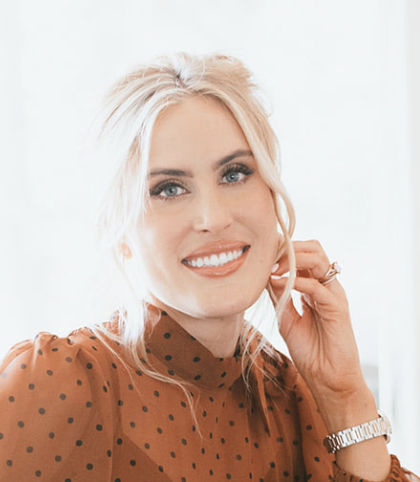
Skin health guru Erica’s decade’s worth of experience working as an esthetician and makeup artist has shaped her foolproof, fuss-free beauty philosophy. She believes that curating thoughtful, streamlined skincare regimens for her clients is key to achieving effortless natural beauty and an overarching sense of empowerment, confidence and well-being. As someone who loves the outdoors and being active, Erica recognizes the link between health, wellness and beauty and embraces a holistic approach that puts equal emphasis on both an inner and outer glow. Erica honed her talent and channeled her passion under the tutelage of celebrated Los Angeles esthetician Gina Mari after having spent years as a makeup artist. Acknowledging that the optimal canvas for makeup is clear, toxin-free skin, Erica gained invaluable experience working on a myriad of skin types with a range of needs, while learning from the industry’s top beauty mavens. In 2019, Erica launched her business EM SKIN, bringing a Beverly Hills medical spa sensibility to the South Bay where clients can always expect highly bespoke, transformational treatments that cleanse, hydrate, detox and sculpt using state of the art machines, the latest technologies, and medical and science-based products. Stepping into her intimate, beach-meets-chic studio is an experience that is simultaneously spirit lifting, skin firming, and anti-aging. Erica offers a tranquil retreat in the heart of Hermosa beach that calms both the mind and the skin, while delivering game-changing results far glowier than any filter can produce.
Stay In The Know
Get exclusive access to fashion and beauty trends, hot-off-the-press celebrity news, and more.

Samantha Holender is the Senior Beauty Editor at Marie Claire, where she reports on the best new launches, dives into the science behind skincare, and shares the breakdown on the latest and greatest trends in the beauty space. She's studied up on every ingredient you'll find on INCI list and is constantly in search of the world's glowiest makeup products. She's constantly tracking the biggest nail and hair trends to pop up in the beauty space, going backstage during fashion weeks, tracking celebrity looks, and constantly talking to celebrity hair stylists, nail artists, and makeup artists. Prior to joining the team, she worked as Us Weekly’s Beauty and Style Editor, where she stayed on the pulse of pop culture and broke down celebrity beauty routines, hair transformations, and red carpet looks. Her words have also appeared on Popsugar, Makeup.com, Skincare.com, Delish.com, and Philadelphia Wedding. Samantha also serves as a board member for the American Society of Magazine Editors (ASME). She first joined the organization in 2018, when she worked as an editorial intern at Food Network Magazine and Pioneer Woman Magazine. Samantha has a degree in Journalism and Mass Communications from The George Washington University’s School of Media and Public Affairs. While at GWU, she was a founding member of the school’s HerCampus chapter and served as its President for four years. When she’s not deep in the beauty closet or swatching eyeshadows, you can find her obsessing over Real Housewives and all things Bravo. Keep up with her on Instagram @samholender.
- Julia MarzovillaFashion E-Commerce Editor
-
 Kate Middleton Broke Tradition With Prince Louis's Adorable 7th Birthday Photo and Video
Kate Middleton Broke Tradition With Prince Louis's Adorable 7th Birthday Photo and VideoThe Princess of Wales is switching up the way she marks birthdays.
By Kristin Contino
-
 Florence Pugh Takes the Pointe Shoe Trend Center Stage
Florence Pugh Takes the Pointe Shoe Trend Center StageShe's so back.
By Kelsey Stiegman
-
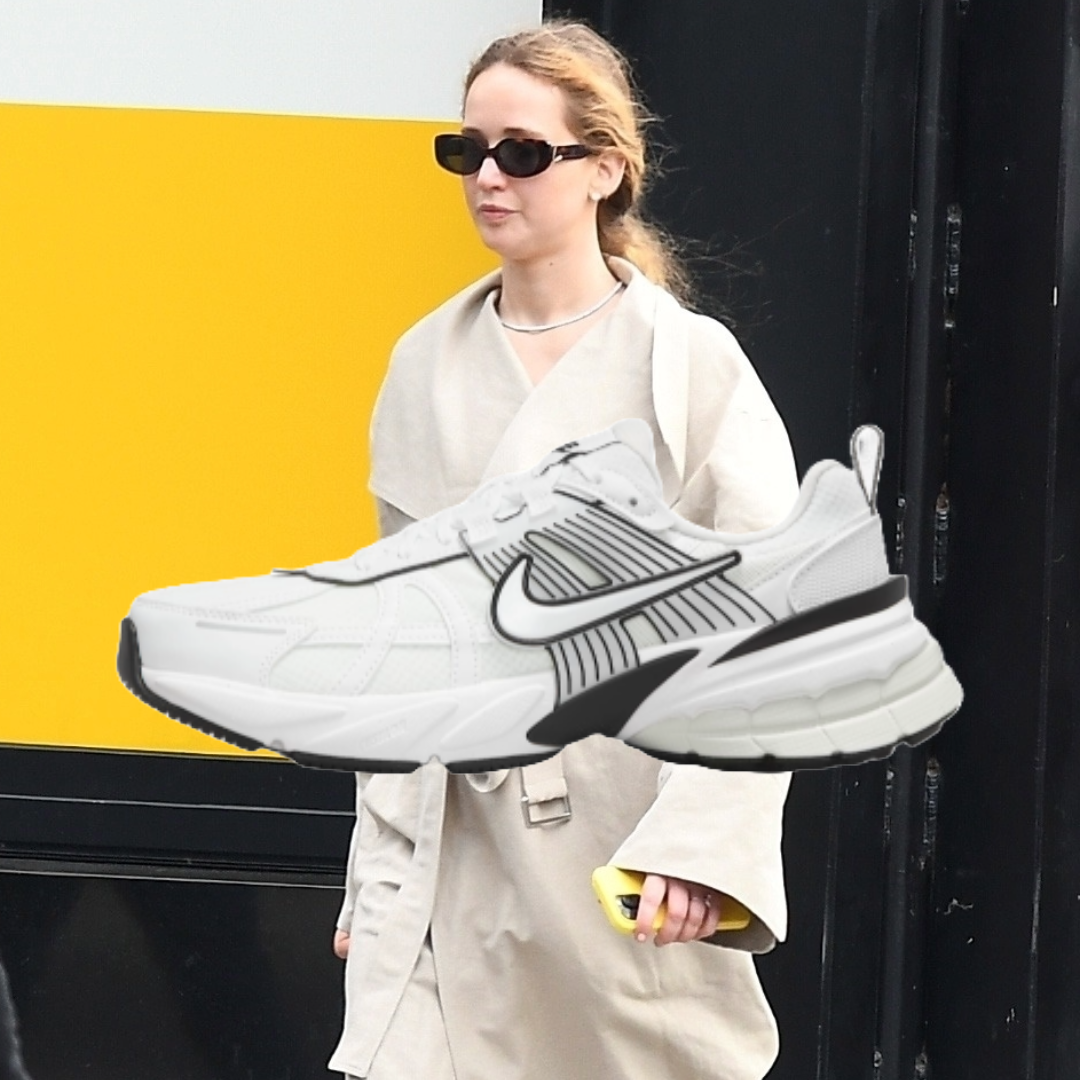 These Affordable Sneakers Have Won Over Nearly Every Stylish A-Lister
These Affordable Sneakers Have Won Over Nearly Every Stylish A-ListerGet the A-list look for less.
By Brooke Knappenberger
-
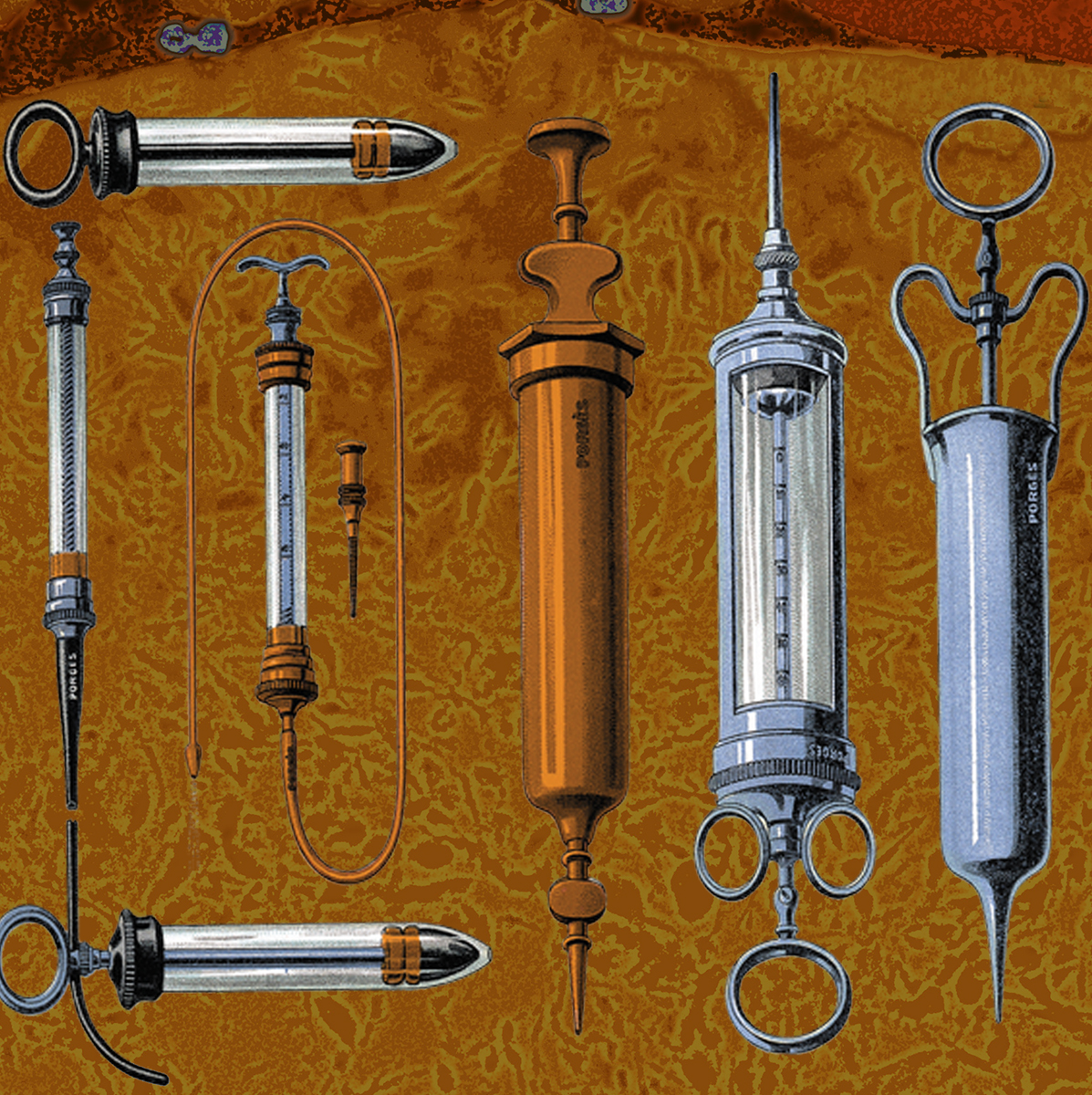 Here's the Skinny on Fat Grafting Skincare Treatments
Here's the Skinny on Fat Grafting Skincare TreatmentsHere's the skinny on the cosmetic treatment taking over plastic surgeons' offices from coast-to-coast.
By Fiorella Valdesolo
-
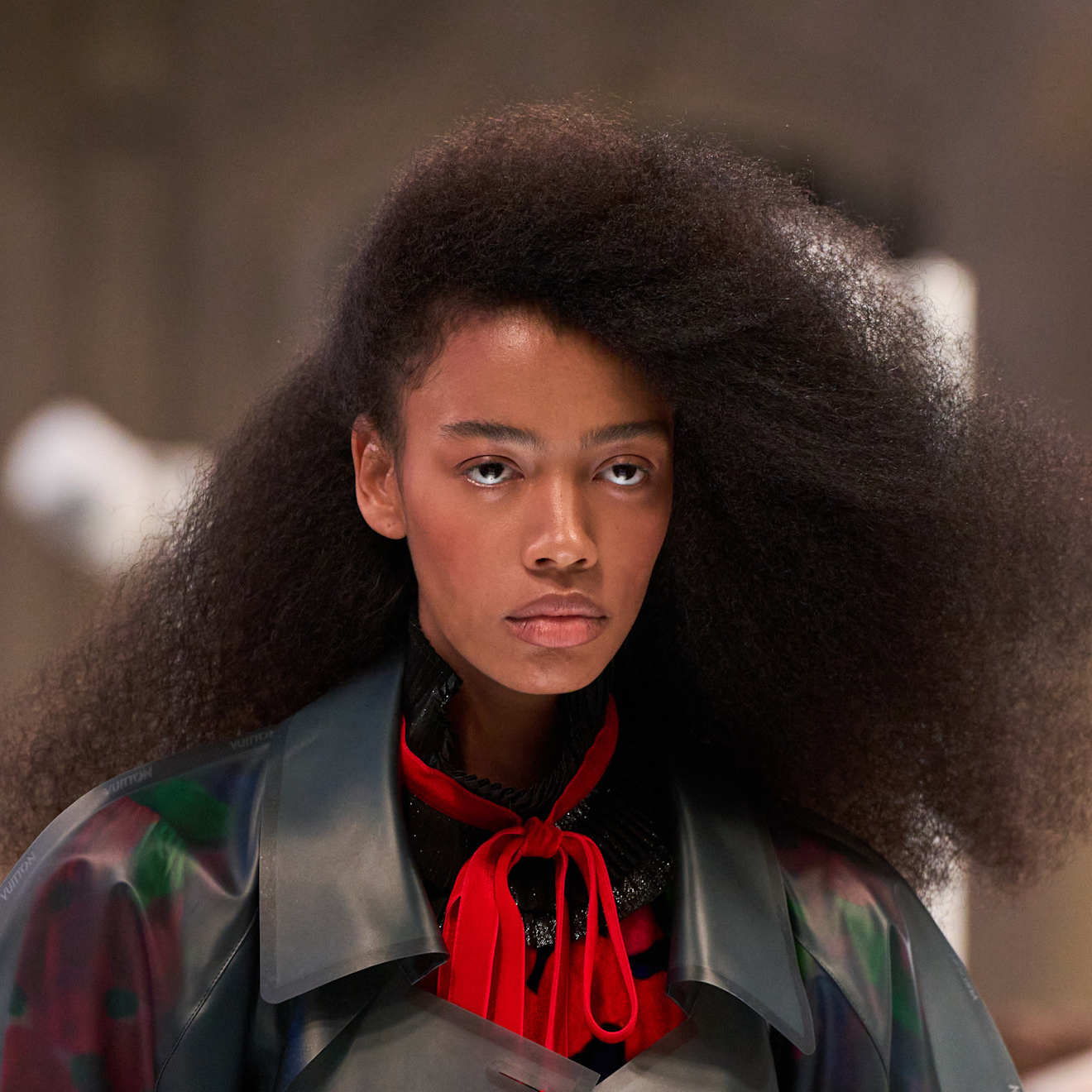 Everything You Need to Know About Marie Claire’s Skin and Hair Awards
Everything You Need to Know About Marie Claire’s Skin and Hair AwardsCould your brand survive an editor testing session?
By Ariel Baker
-
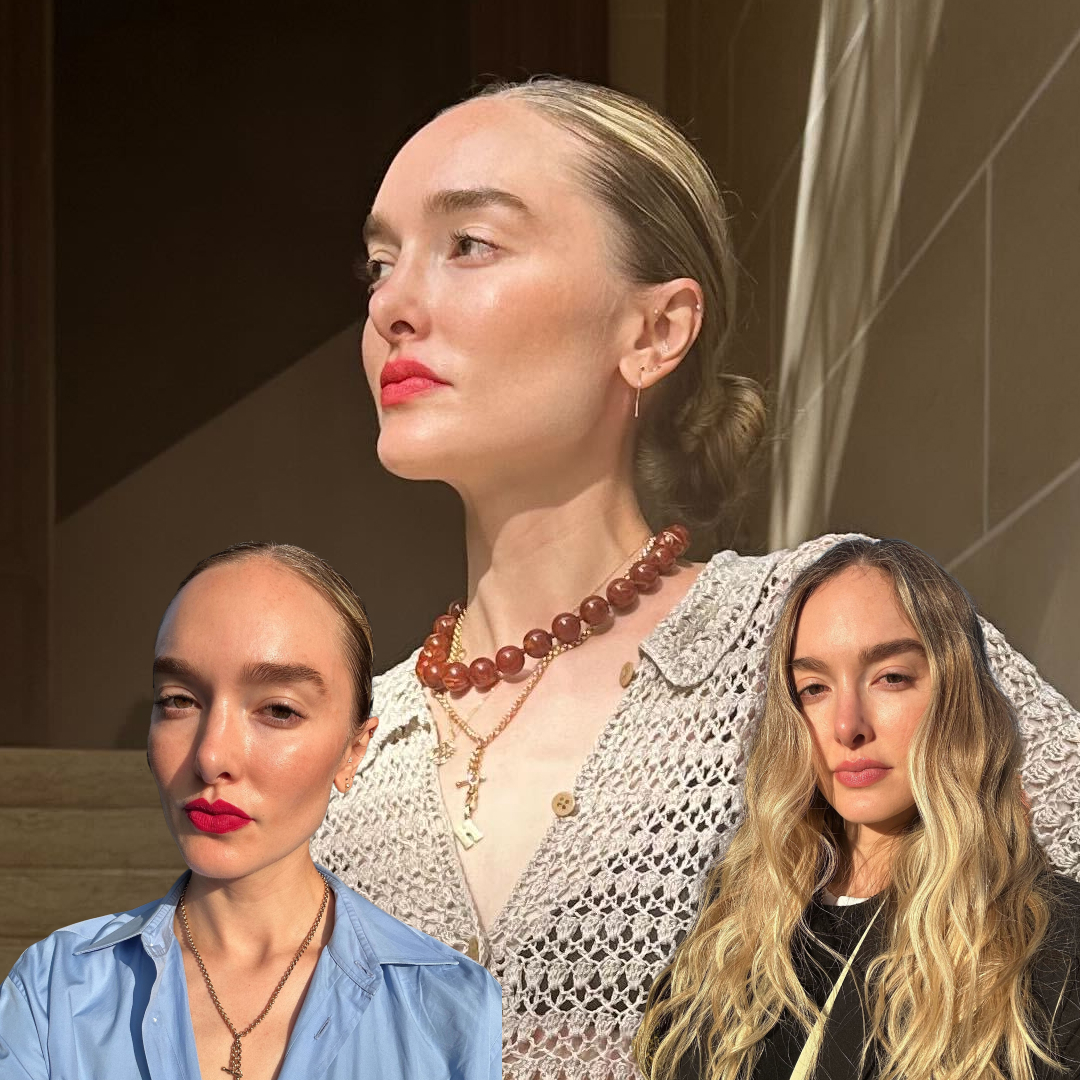 People Always Compliment My Flawless Skin—These 6 Steps Are Why
People Always Compliment My Flawless Skin—These 6 Steps Are WhyFrom sunscreen and essences to moisturizers, it's all here.
By Hannah Baxter
-
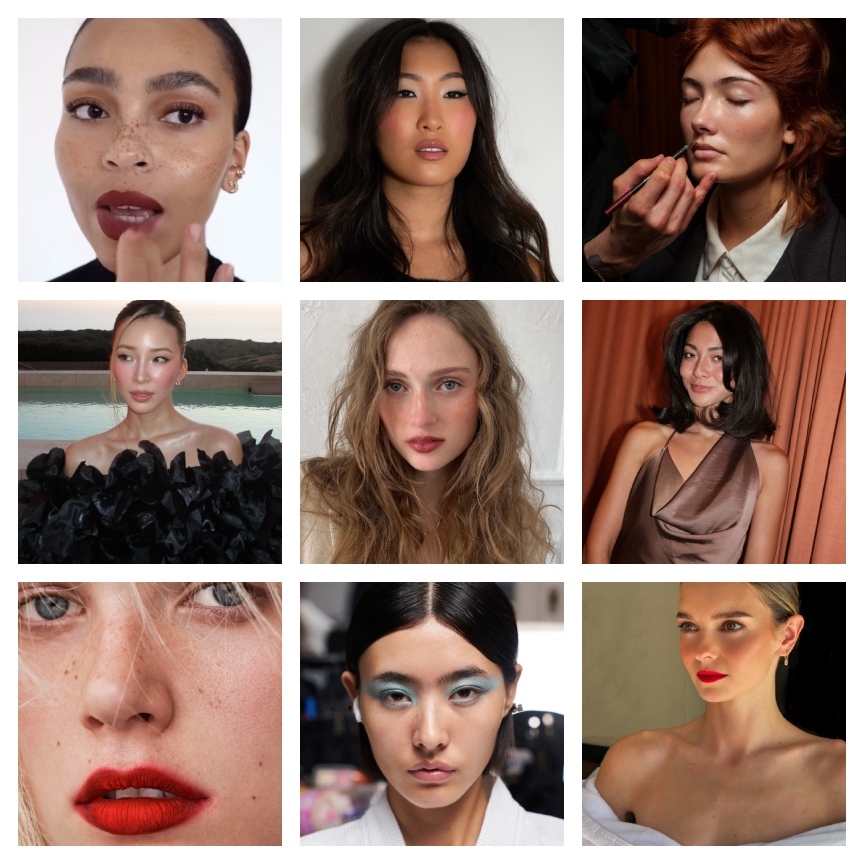 The 11 Best Spring Makeup Trends Are Sexy, Sensual, and Perfectly Luminous
The 11 Best Spring Makeup Trends Are Sexy, Sensual, and Perfectly LuminousIt's dew or die time.
By Jamie Wilson
-
 Simone Ashley’s Indie Sleaze Glam Is a Cool-Toned Dream
Simone Ashley’s Indie Sleaze Glam Is a Cool-Toned DreamThe actor was spotted in New York City looking like the epitome of cool-toned beauty.
By Ariel Baker
-
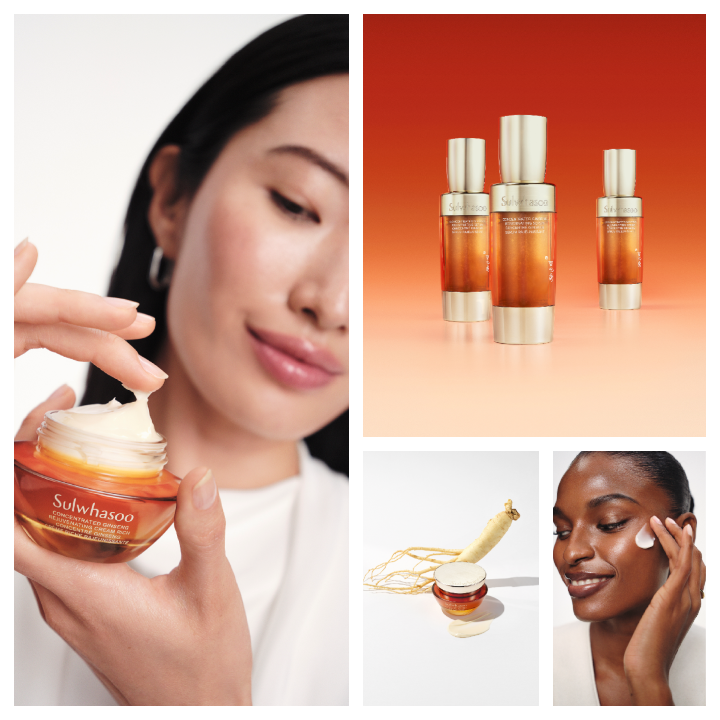 Sulwhasoo’s New Concentrated Ginseng Cream Is a Wrinkle-Erasing Time Machine for My Skin
Sulwhasoo’s New Concentrated Ginseng Cream Is a Wrinkle-Erasing Time Machine for My SkinThis Seoul-based brand is the key to plump skin.
By Samantha Holender
-
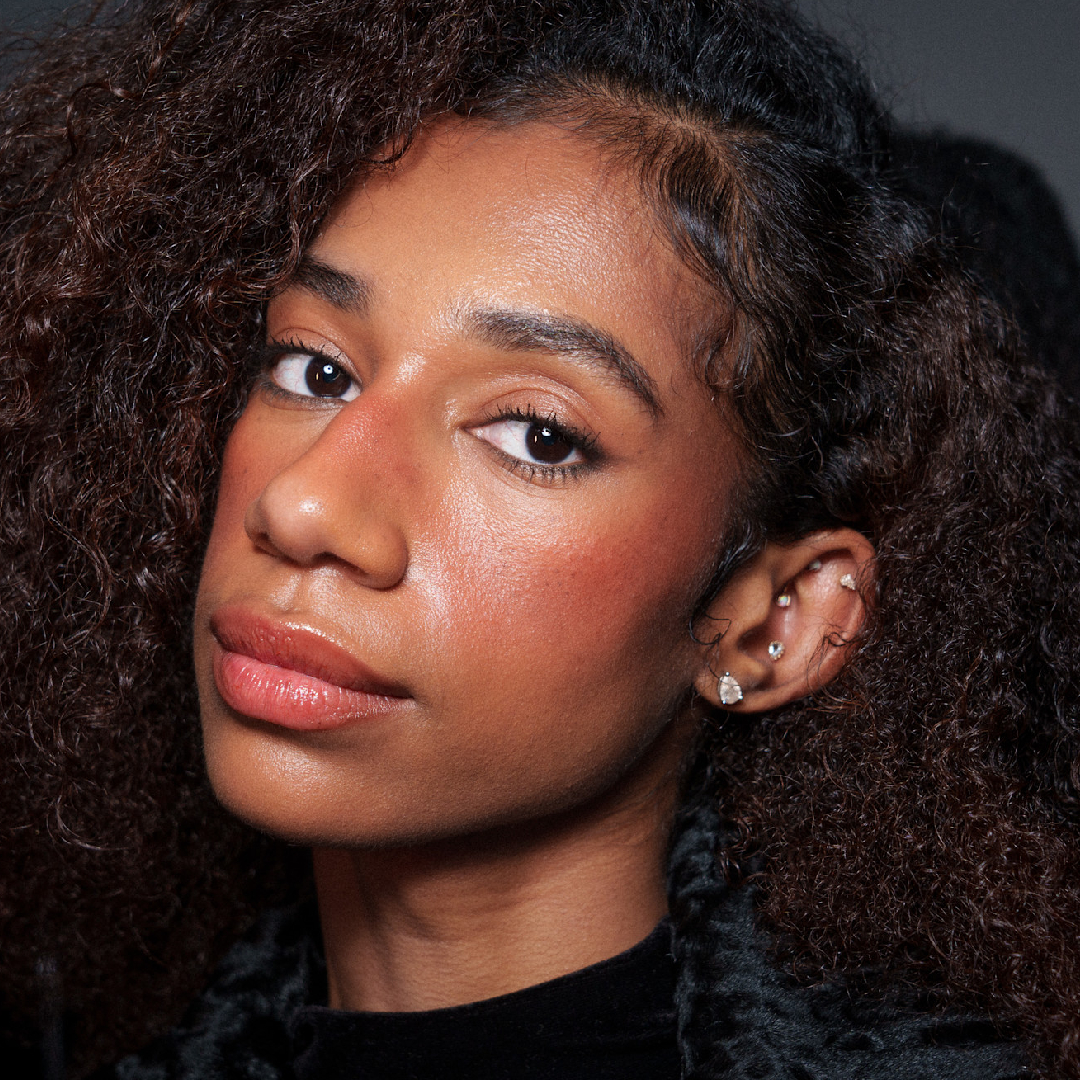 The 10 Best Hair Growth Shampoos of 2025, Tested by Editors
The 10 Best Hair Growth Shampoos of 2025, Tested by EditorsExpensive and healthy-looking hair on lock.
By Marisa Petrarca
-
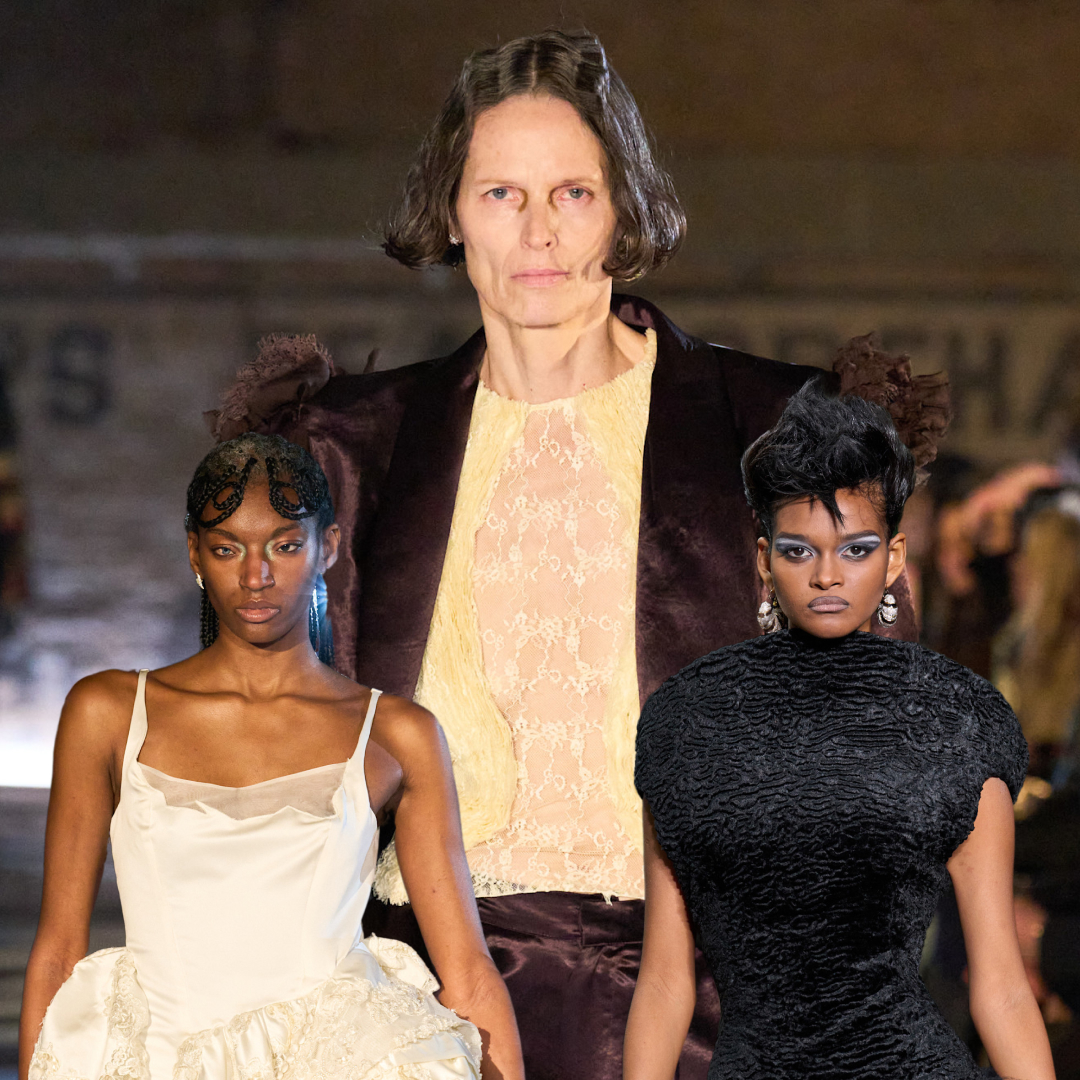 New York Fashion Week’s Fall/Winter 2025 Best Beauty Moments Are a Lesson in Juxtaposition
New York Fashion Week’s Fall/Winter 2025 Best Beauty Moments Are a Lesson in JuxtapositionThe week's best beauty looks were a maximalism master class.
By Ariel Baker